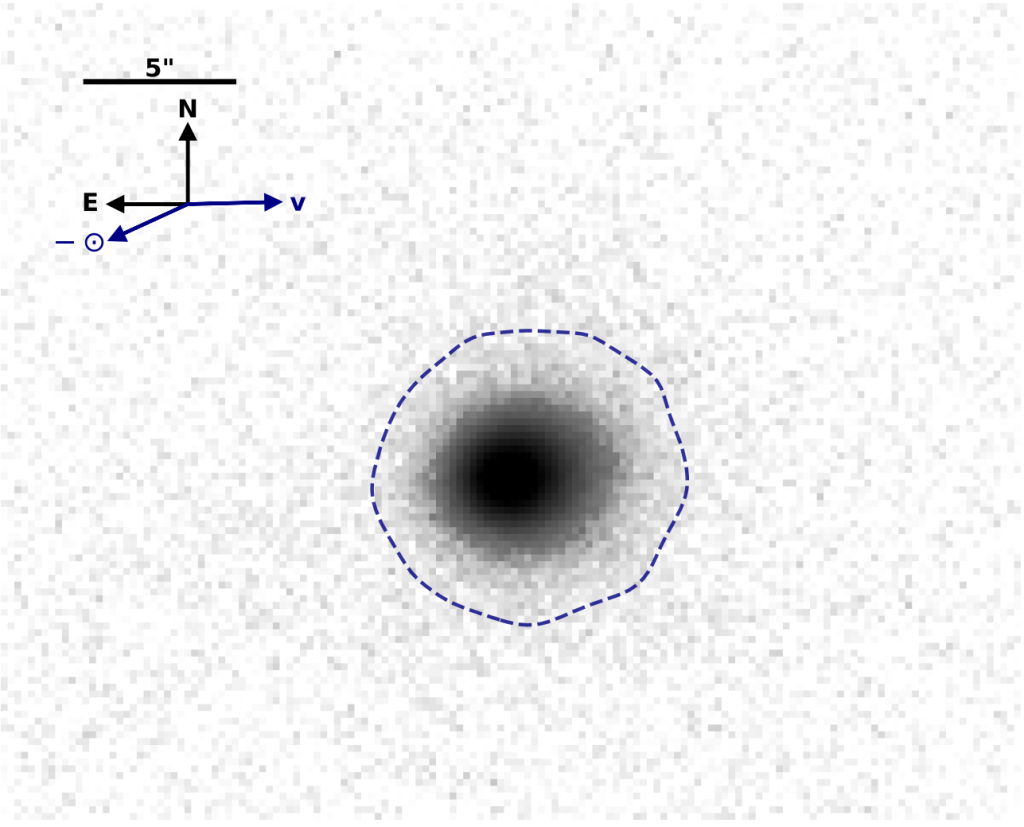New research published on ArXiv reveals fascinating details about comet 3I/ATLAS, a cosmic messenger from beyond our solar system

The cosmos has delivered another extraordinary gift to astronomers: 3I/ATLAS, only the third confirmed interstellar object ever discovered. This remarkable comet is providing scientists with unprecedented insights into distant planetary systems—and Light Bridges’ Two-meter Twin Telescope played a crucial role in the groundbreaking research now published on the ArXiv preprint repository.
A Cosmic Traveler from the Galactic Neighborhood
Discovered on July 1, 2025, by the ATLAS survey in Chile, 3I/ATLAS (officially designated C/2025 N1) joins the exclusive club of confirmed interstellar visitors, following ‘Oumuamua in 2017 and comet Borisov in 2019. As the research team led by Raúl de la Fuente (Universidad Complutense de Madrid) explains, “interstellar objects are like cosmic bottled messages that convey information about the planetary systems where they formed for anyone to analyze, connecting distant worlds meant to never interact.”
The discovery is particularly significant because, as the researchers note, “after having characterized just two such interlopers—1I/2017 U1 (‘Oumuamua) and 2I/Borisov—more questions were raised than answered.”
Using Light Bridges’ Two-meter Twin Telescope at the Teide Observatory, researchers captured detailed images of 3I/ATLAS through a 3.15-hour observation session combining 227 individual exposures. The telescope revealed the comet’s impressive dust coma—a glowing envelope extending over 26,400 by 24,700 kilometers—clearly showing its active nature despite being well beyond Mars’ orbit.
Observations of interstellar comet 3I/ATLAS were obtained with Gran Telescopio Canarias and TTT. “The former were used to derive its spectral class and visible slope; the latter provided the rotational period and insights on its cometary activity”, add researchers.
Key Discoveries
The collaborative observations, which also included the 10.4-meter Gran Telescopio Canarias, revealed fascinating details about this interstellar wanderer:
Familiar Composition: 3I/ATLAS displays characteristics remarkably similar to comets from our own solar system, with a reddish color and dusty composition that classify it as a D-type object—similar to many asteroids and comets in our outer solar system.
Steady Rotation: The comet completes one rotation every 16.79 hours, with relatively small brightness variations suggesting a fairly spherical nucleus surrounded by its dust coma.
Ancient Origins: Computer simulations traced 3I/ATLAS’s journey backward through time, revealing it likely originated from a star system in the Galactic thin disk. The research suggests its parent system “includes a solar-like star with slightly sub-solar metallicity,” providing intriguing clues about the stellar neighborhood from which this cosmic visitor emerged.
Implications for Planetary Science
One of the most intriguing findings is how “normal” 3I/ATLAS appears compared to solar system comets. Despite traveling through interstellar space for millennia, it shows typical cometary behavior and composition. As the researchers note, “the results from the physical characterization of 3I/ATLAS further support the idea that extrasolar debris is not too different from the one found in the solar system and it is the result of similar formation processes.”
“Interstellar objects are like cosmic bottled messages that convey information about the planetary systems where they formed”
3I/ATLAS will reach its closest approach to the Sun on October 29, 2025, before beginning its journey back into interstellar space, continuing its eternal voyage through the galaxy.
The complete research findings have been published on ArXiv (https://arxiv.org/abs/2507.12922) and will appear in Astronomy & Astrophysics, representing a collaborative effort between institutions in Spain such as Universidad Complutense de Madrid and Instituto de Astrofísica de Canarias, with Light Bridges’ Two-meter Twin Telescope providing crucial observational data that continues to push the boundaries of interstellar object research.


